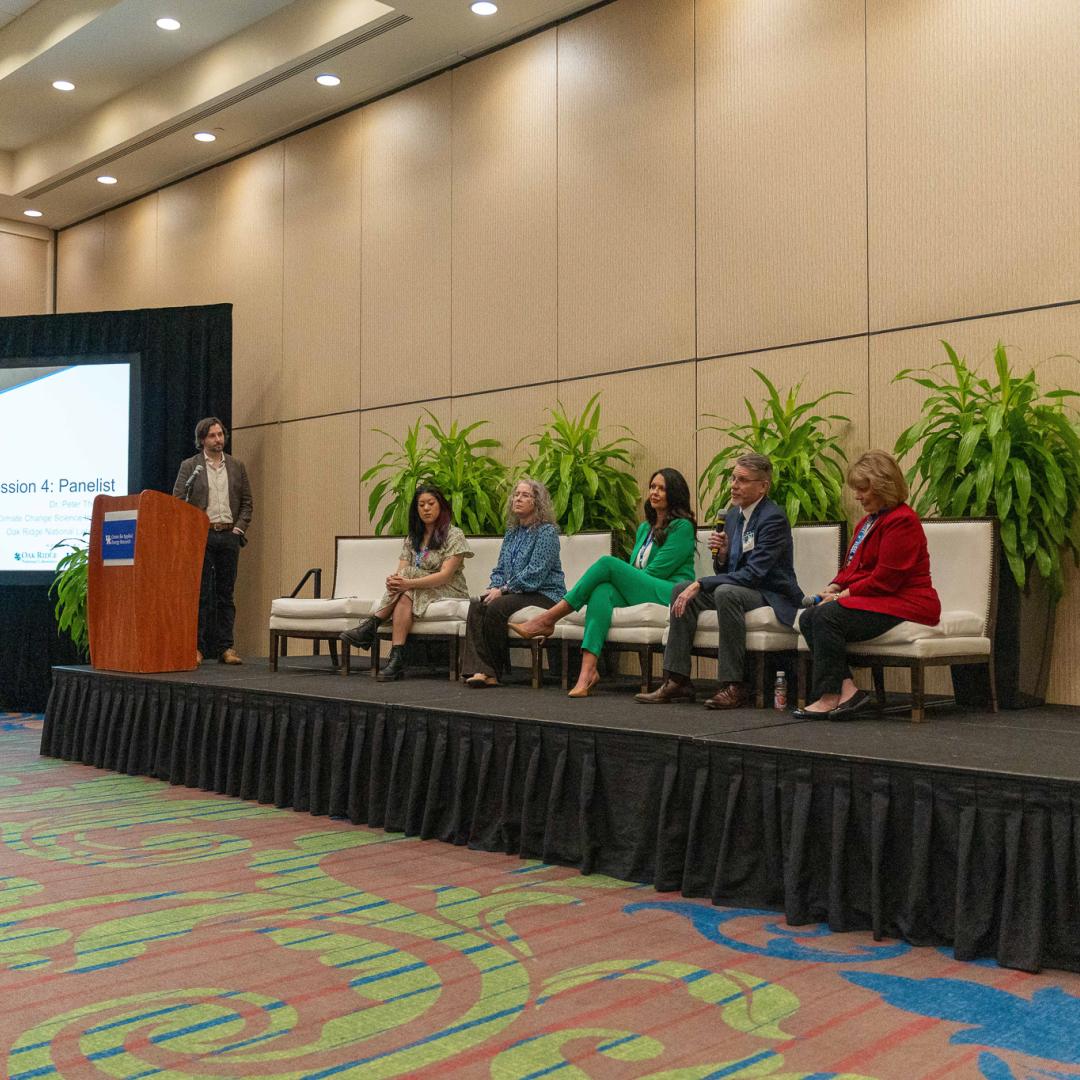Fossil Energy
Oak Ridge National Laboratory (ORNL) has a rich history of scientific research supporting the nation's exploration, production, and use of abundant, domestic fossil energy. We focus on research and development of materials and sensors for extreme environments; modeling and simulation of subsurfaces; and technologies for carbon capture, use, and storage.
Materials for Extreme Environments
- Cutting-edge materials for use in boilers, turbines, and heat exchangers for ultra-supercritical steam and supercritical carbon dioxide (CO2) power cycles and solid-oxide fuel cells
- New alloys and coatings to enable safer, longer lasting, and more efficient power plant operation
- Detailed analysis of novel materials to assist with certification before first use in power plants
- Advanced manufacturing of new components for fossil energy production and use
Carbon Capture, Use, and Storage
Carbon capture, use, and storage is a strategy to stabilize the increasing concentration of CO2 in the atmosphere. Recent breakthroughs at ORNL include the following.
- Capturing CO2 from ambient air and binding it in crystal form using a novel, low-cost material and method for permanent storage
- Directly converting CO to ethanol in a high-yield process using a nanotechnology-designed catalyst
- Using tracers to study the transport of CO injected into the subsurface at the Cranfield site in Natchez, Mississippi-a unique, real-world test of CO2 storage
- Exploring the basic science of seal resilience in CO2 leakage from belowground carbon sequestration sites
- Developing models to predict how quickly mineral reactions occur in response to CO2 sequestration-important for long-term security of storage sites
SubTER Program
DOE's Subsurface Science, Technology, and Engineering Research and Development (SubTER) crosscut program brings together stakeholders from the fossil energy, geothermal energy, nuclear energy, environmental, and basic science focus areas.
- High-performance computing (HPC) and novel computational imaging techniques to better model and simulate the subsurface environment
- Neutron imaging and scattering techniques to understand multiscale hydrocarbon storage within reservoir rock, flow through porous and fractured geologic materials, and deformation of geologic materials
- Advanced materials to improve construction techniques for wells
- Materials and sensors that can withstand a harsh underground environment and allow for better reservoir characterization
- Mineral recovery from geothermal brines and produced fluids, including membrane, solvent extraction, ion exchange, and sorbent technologies
Modeling Subsurface Power Generation Applications
Researchers at ORNL and other organizations use our HPC resources to model their work for faster results.
- Ramgen Power Systems testing of aerospace shock wave compression technology for gas compression systems such as CO2 compressors. Efficient compression of CO2 could significantly lower the high cost of carbon capture and storage.
- Simulating the first coal plant with near-zero emissions. In a project for the National Energy Technology Laboratory, ORNL simulated clean coal technology that would result in a combined-cycle, coal-fueled power plant with near-zero emissions of nitrogen and mercury and that would trap most CO2. The modeling work helped avoid the cost of building expensive prototypes.
- Virginia Tech used ORNL's Titan supercomputer to study subsurface multiphase flows, providing critical information needed to evaluate the efficacy of CO2 sequestration in a given location.
Contact



